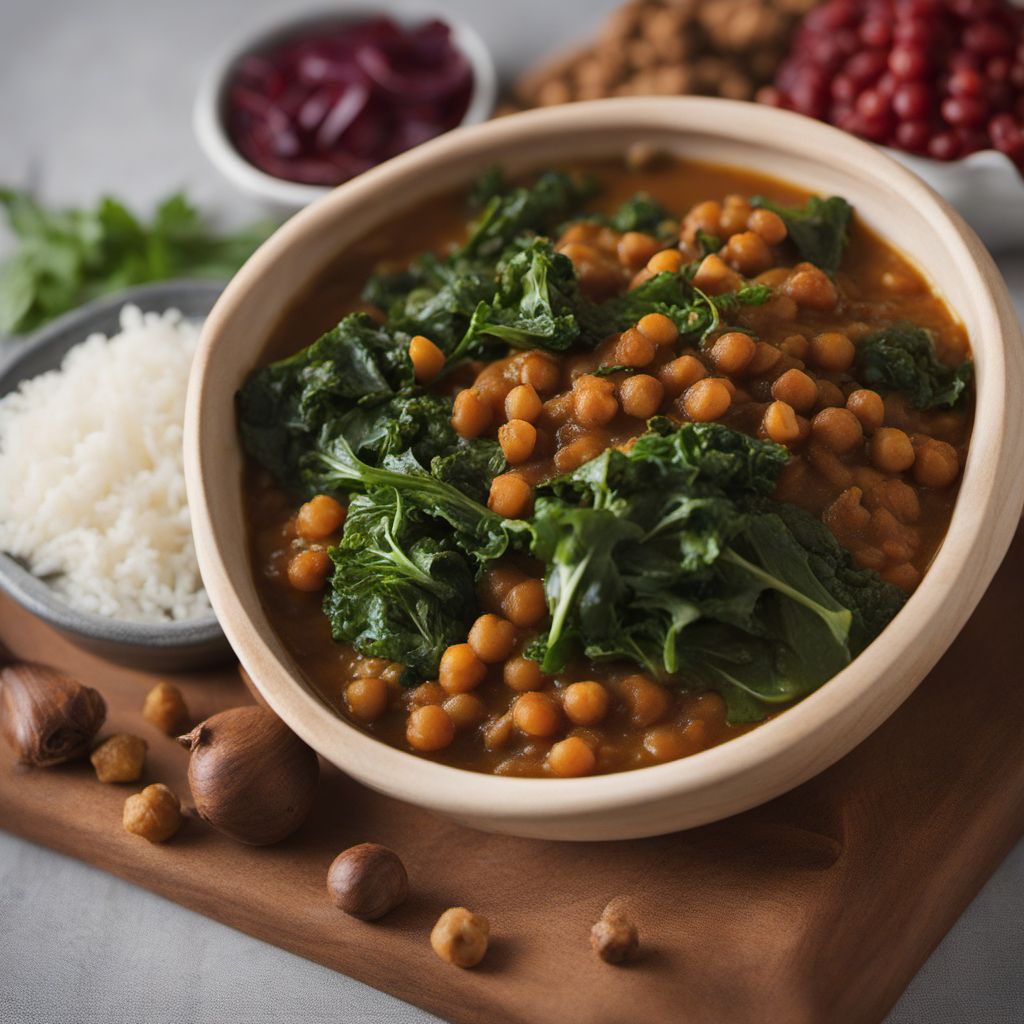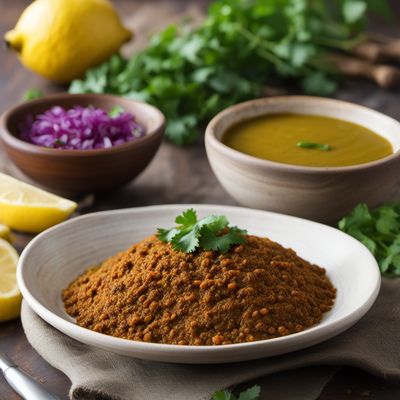
Recipe
Ethiopian Bayenetu Feast
A Taste of Ethiopia: Bayenetu - A Platter of Flavors and Traditions
4.8 out of 5
Indulge in the vibrant and diverse flavors of Ethiopian cuisine with this authentic Bayenetu recipe. Bayenetu is a traditional Ethiopian feast that showcases a variety of vegetarian dishes served on a large platter. It is a celebration of community, culture, and the rich culinary heritage of Ethiopia.
Metadata
Preparation time
30 minutes
Cooking time
1 hour
Total time
1 hour 30 minutes
Yields
4 servings
Preparation difficulty
Medium
Suitable for
Vegan, Vegetarian, Gluten-free, Dairy-free, Nut-free
Allergens
N/A
Not suitable for
Paleo, Keto, Low-carb, High-protein, Carnivorous
Ingredients
-
2 cups (470ml) teff flour 2 cups (470ml) teff flour
-
3 cups (710ml) water 3 cups (710ml) water
-
1 teaspoon active dry yeast 1 teaspoon active dry yeast
-
1 teaspoon salt 1 teaspoon salt
-
1 cup (235ml) lentils 1 cup (235ml) lentils
-
1 cup (235ml) chickpeas 1 cup (235ml) chickpeas
-
2 cups (470ml) vegetable broth 2 cups (470ml) vegetable broth
-
1 onion, finely chopped 1 onion, finely chopped
-
3 cloves garlic, minced 3 cloves garlic, minced
-
2 tablespoons olive oil 2 tablespoons olive oil
-
1 teaspoon berbere spice 1 teaspoon berbere spice
-
1 teaspoon mitmita spice 1 teaspoon mitmita spice
-
2 cups (470ml) collard greens, chopped 2 cups (470ml) collard greens, chopped
-
2 cups (470ml) cabbage, shredded 2 cups (470ml) cabbage, shredded
-
2 cups (470ml) potatoes, diced 2 cups (470ml) potatoes, diced
-
2 cups (470ml) carrots, sliced 2 cups (470ml) carrots, sliced
-
Salt to taste Salt to taste
Nutrition
- Calories (kcal / KJ): 450 kcal / 1884 KJ
- Fat (total, saturated): 8g, 1g
- Carbohydrates (total, sugars): 80g, 5g
- Protein: 18g
- Fiber: 15g
- Salt: 2g
Preparation
-
1.In a large bowl, combine the teff flour, water, yeast, and salt. Mix well and let the batter ferment for at least 24 hours.
-
2.Rinse the lentils and chickpeas, then cook them separately in vegetable broth until tender. Drain and set aside.
-
3.In a large pan, heat the olive oil over medium heat. Add the onion and garlic, and sauté until golden brown.
-
4.Stir in the berbere and mitmita spices, and cook for another minute to release their flavors.
-
5.Add the collard greens, cabbage, potatoes, and carrots to the pan. Cook until the vegetables are tender, but still retain their texture.
-
6.Season the vegetable mixture with salt to taste.
-
7.Heat a non-stick skillet over medium heat. Pour a ladleful of the fermented teff batter onto the skillet, spreading it evenly to form a thin pancake. Cook until the edges start to lift and the bottom is lightly browned. Repeat with the remaining batter.
-
8.Place the injera on a large platter, and arrange the lentils, chickpeas, and vegetable dishes around it.
-
9.Serve the Bayenetu feast with extra injera on the side for tearing and scooping up the delicious flavors.
Treat your ingredients with care...
- Teff flour — Ensure that the batter is well-fermented for the authentic sourdough taste of injera.
- Berbere spice — Adjust the amount according to your spice preference. It adds a rich and spicy flavor to the dishes.
- Mitmita spice — Use sparingly if you prefer a milder heat, as it is a hot chili powder.
Tips & Tricks
- If you don't have teff flour, you can substitute it with a mixture of whole wheat flour and all-purpose flour.
- Feel free to add other vegetables of your choice to the Bayenetu platter, such as green beans or bell peppers.
- Serve the Bayenetu feast with a side of traditional Ethiopian condiments like injera bread, spicy lentil dip (shiro), and yogurt (ayib).
- To make the injera more sour, let the batter ferment for longer than 24 hours.
- Leftover Bayenetu can be refrigerated and enjoyed the next day, as the flavors tend to develop and intensify.
Serving advice
To serve Bayenetu, gather your friends and family around the platter. Tear off pieces of injera and use them to scoop up the various dishes. Encourage everyone to try a little bit of everything to fully experience the flavors and textures of Ethiopian cuisine.
Presentation advice
Arrange the lentils, chickpeas, and vegetable dishes in a circular pattern around the injera on the platter. Garnish with fresh herbs like cilantro or parsley for a pop of color. The vibrant and colorful presentation will make the Bayenetu feast even more enticing.
More recipes...
More Ethiopian cuisine dishes » Browse all

Gomen be siga
Gomen be siga is a traditional Ethiopian dish that is made with tender beef and collard greens. The dish is hearty and flavorful, and it is...

Himbasha
Himbasha is a traditional Ethiopian bread that is sweet and slightly spiced. It is often served during special occasions and celebrations.

Kitfo
Kitfo is an Ethiopian dish that consists of raw minced beef that is seasoned with spices and served with injera, a sourdough flatbread. It is a...




